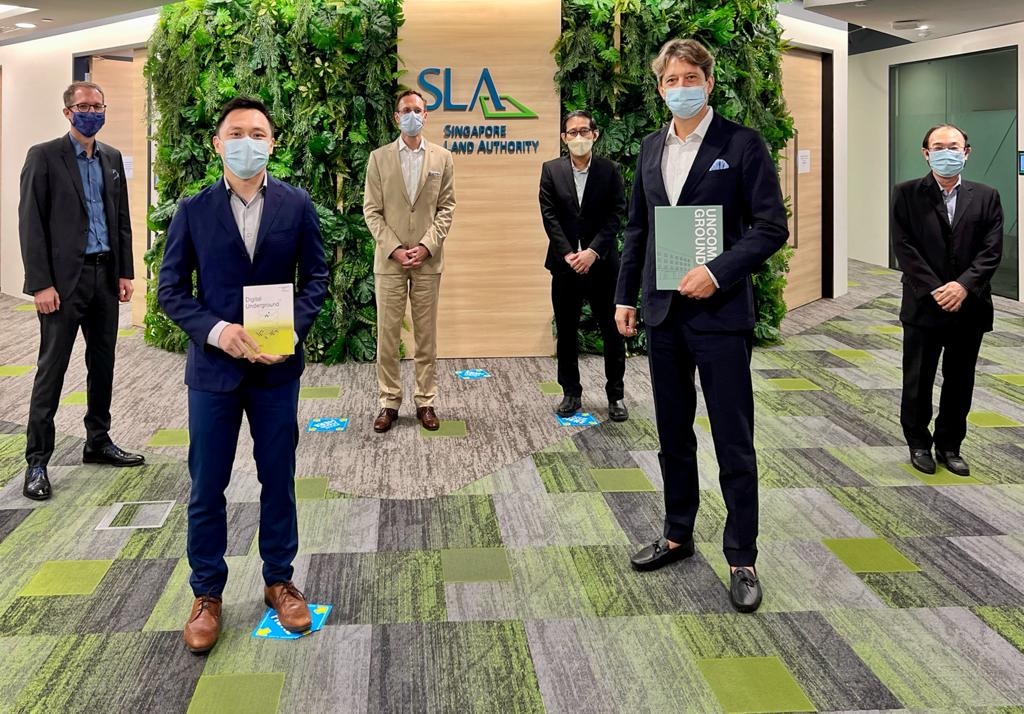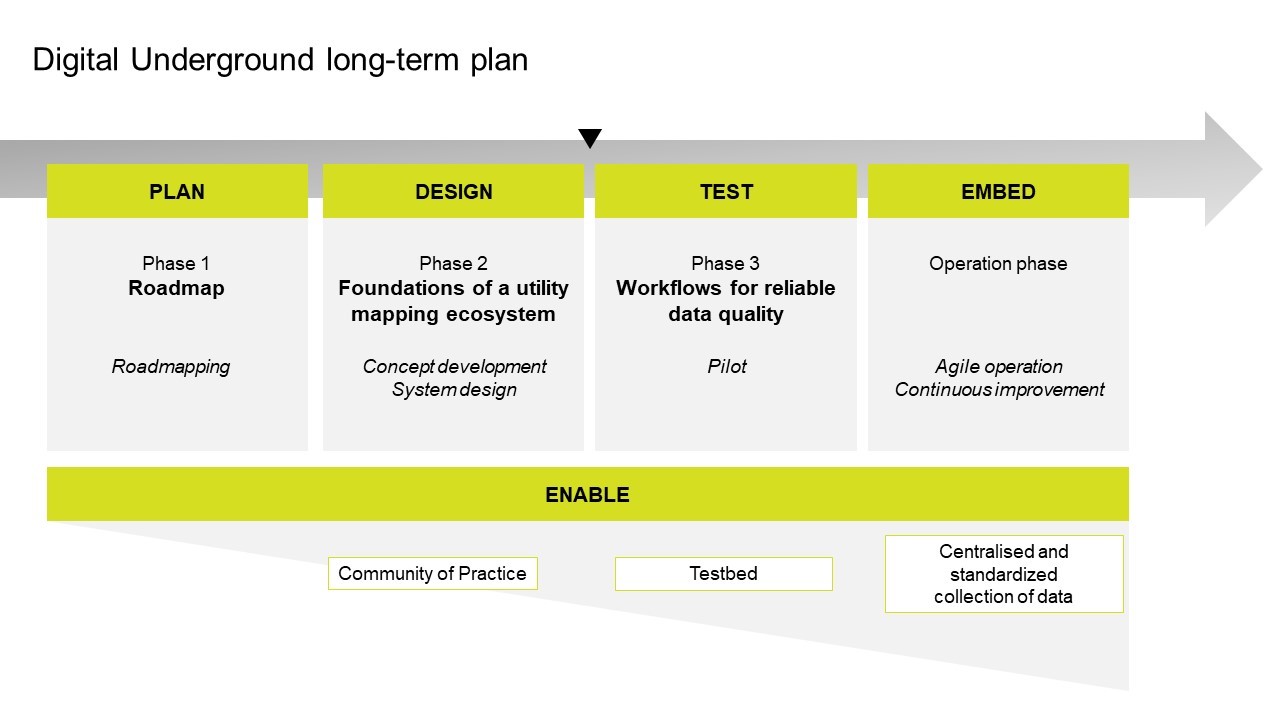Digital Underground 3.0: workflows for reliable data quality
Digital Underground, a project by Singapore ETH-Centre and the Singapore Land Authority to support the establishment of a reliable map of subsurface utilities in Singapore, began its third phase on 1 November 2021.

The Digital Underground project began in 2017 as a collaboration between the Singapore-ETH Centre (SEC) and the Singapore Land Authority (SLA). On the basis that reliable and accurate data are needed for developing and managing underground space, the project supports the SLA in establishing a reliable underground map of subsurface utilities.
With the recent signing of a new research collaboration agreement between the SLA and the SEC, Digital Underground commenced its third phase on 1 November. The project is led by Principal Investigator Prof. Martin Raubal, Co-Investigator Prof. Andreas Wieser and Rob van Son as the Project Leader.
Accurate and reliable information on the location and type of underground utilities is essential for the planning, development, and administration of space. Inaccurate information can lead to sub-optimal decision making, increased costs, and safety hazards.
Singapore’s Draft Master Plan 2019 showcased planned underground uses at the district level in 3D for the first time. More importantly, Digital Underground’s work was aligned with the need highlighted by the Urban Redevelopment Authority – reliable data to guide underground development and planning.
From developing a roadmap to the future objective of developing workflows for improving the reliability of subsurface data, Digital Underground has come a long way. Here’s a quick summary of the project's phases through the years.

Phase 1 and 2: Building a roadmap and an ecosystem of underground utilities mapping
In its first phase, Digital Underground surveyed available maps and underground mapping techniques to determine what was needed to develop a coherent national mapping strategy for underground utilities. A roadmap for an integrated ecosystem approach was set in motion.
The team then worked on developing the foundations of this ecosystem in its second phase. In a sustainable utility mapping ecosystem, the necessary people, processes, and technology would need to be in place to continuously provide reliable 3D utility map data to both government and private sectors.
As part of the ecosystem foundations, the team delivered recommendations for a data governance framework and improvement of surveying standards and approaches for mapping. Digital Underground also developed a prototype consolidated map data management system and a capacity building framework to train professionals. Finally, the team engaged stakeholders from public and private sector organisations through the DUConnect Community of Practice.
On the importance of the DUConnect Community of Practice, Rob van Son said: “The production, management, and use of subsurface utility data involves many different stakeholders with varying interests. It is essential to continuously involve them and collaborate with them to ensure the developed workflows are feasible and effectively contribute to the goal of a better map.”
Phase 3: Workflows for reliable data quality
In this new phase, Digital Underground’s objectives are twofold:
- Develop and test a workflow to reliably capture digital subsurface utility data for newly built utilities together with a network of stakeholders
- Investigate the tools and strategies necessary for Singapore to manage and improve the quality of subsurface utility data
Ensuring sufficient quality of all newly captured data is a cornerstone of a national mapping strategy that is based on gradual and continuous improvement. Processes on the ground are complex and involve many stakeholders that often need to work within challenging constraints of time, space, and manpower.
“We will address the reconciliation of legacy data, for which quality is often unknown, through integration of heterogeneous data sources,” said Prof. Martin Raubal, on improving data quality. Digital Underground will work towards this by identifying concrete quality improvement scenarios, such as increasing spatial accuracy by updating stored information based on novel measurement technologies.
With continuous engagement, Digital Underground hopes to establish a sustainable platform for gathering feedback, knowledge sharing, and problem-solving by key stakeholders from the public and private sector, including surveyors, contractors, utility companies, land development agencies, technology providers, and academia.
"Together with stakeholders in a pilot setting, we aim to develop and improve feasible workflows for capturing reliable digital data that are submitted to and verified in a common Data Quality Hub for all of Singapore,” Rob van Son stated.
“The Singapore Land Authority believes in the importance of managing reliable underground information for better future development and planning in Singapore. Through this project, the vision is to develop a reliable digital twin of underground utilities that will contribute towards a smart, resilient, and sustainable Singapore,” said Dr Victor Khoo, Director, Survey and Geomatics, of the SLA. “Not only will professionals be able to perform their duties more effectively through a digital workflow, agencies will also be empowered to make informed decisions with reliable digital data.”
These are exciting times for both Digital Underground and the SLA. These combined efforts will allow public and private stakeholders to harness the value of high quality geospatial data of subsurface utilities for Singapore’s future underground development.